What is the Difference in Application of Polyethylene Packaging Barrels and Polyethylene Tanks?
Polyethylene tanks are used to store materials kept in a static state (inert), but packing barrels are used to store materials kept in a non-static state and are specially designed for transportation operations, getting filled and empty in foodstuff, pharmaceutical, cosmetics, and chemical production lines.
What is the Foam Tank and What are their Uses?
The introduction of foams into plastic products will bring several advantages. The operation mechanism of foams in the production process is to release gas during the melting of polymers and to form a network of polyethylene with pores containing trapped gases. These trapped gases cause the bulkiness of the polyethylene product and increase the thickness of the polyethylene in an equal mass. The presence of trapped gases in the polyethylene matrix increases the polyethylene's insulating power even more, and one of its main uses is the storage of intermediate materials at a certain temperature, under which they must be added to another reaction, for a limited period of time. For example, an intermediate material, whose temperature is about 50 degrees after production, is produced in the production process of adhesives. This intermediate material must be stored and its temperature should reach about 40 degrees so that it can be used in the next stage of the production process. The best option for temporary storage of this intermediate material is a polyethylene foam tank that can maintain this temperature for a certain period of time. Another application of foam tanks is the storage of drinking water for residential units in the southern regions of the country. It is necessary to use foam tanks in order to maintain the temperature of the stored water or increase it slightly in these areas due to the high air temperature and the heating of water stored in normal tanks up to 60 degrees.
Are Polyethylene Tanks Resistant to Sunlight?
Polyethylene tanks need to be resistant to UV rays due to their type of application that are exposed to UV rays for long periods of time. In fact, one of the factors of destruction of polyethylene tanks exposed to outdoors is the UV ray and the destruction of these products during the guarantee period can be prevented using additives designed for the polyolefin family.
How to Distinguish Polyethylene Tanks with Pure and Impure Raw Materials?
Polyethylene tanks with pure raw materials, which can contain fillers such as calcium carbonate, can be identified in the following ways:
-
The presence of impurities can be detected in clear tanks by cutting a small piece of it and measuring its density. If the density of the tank is around 0.935-0.939 grams per cubic centimeter, it indicates the use of pure materials in its production.
-
If the tank is fractured and the cross-section at the fracture site is white and plaster-like, it indicates the presence of impurity in the raw materials used.
-
If a white layer is placed on the hand by touching the inner surface of the tanks, it indicates the presence of calcium carbonate in the polymer matrix. It should be mentioned that the polyethylene tanks of Tabarestan Plastic Complex are produced in a completely-pure form.
Why do Some Polyethylene Products get Discolored?
Polyethylene products can be colored in two ways: 1- Dry Blending 2- Hot Compounding. In the hot compounding method, the raw materials are mixed together in a molten form along with the color master batches during the extruder, and finally, we achieve colored materials to produce the final product. Due to the fact that the base pigment is entered into the molten polymer matrix in this method and after the polymer cools down and the pigments are trapped in it, the amount of pigment extraction is greatly reduced and this course depends on the quality of the pigment used in the master batch. In the dry blending method, raw materials' powder and powdered pigment are mixed together in low revolution mixers so that the pigment particles are distributed completely and uniformly. Because there is no chemical bond between the pigment and the powder in this method and only the pigment powder is placed on the polyethylene powder surface, the possibility of the pigments’ extraction is high and this depends on the pigments' quality. In general, the fastness to light index of different pigments is as follows from the lowest amount: Fluorescent pigments, red pigment, orange pigment, yellow pigment, green pigment... Therefore, red and fluorescent (night-colored) pigments are among the pigments that have a short shelf-life (lifespan). Pigment producing companies have carried out many processes to increase the performance period of red pigments and using these high-performance pigments can increase the shelf life of the products color and guarantee the desired product quality in addition to increasing its price.
What are the Valved Lids of Packing Barrels for?
Special packaging barrels, which are used in the packaging and transportation of volatile chemicals with high vapor pressure, require lids with capability to adjust the vapor pressure of the materials inside them due to the accumulation of vapor of volatile substances during transportation, which can lead to deformation or bursting of the barrel. These lids are designed with valves and the excess vapors resulting from the volatility of the materials inside the barrel are transferred to the outside by installing a membrane in its lower part without the material stored inside the barrel leaks out.
What Effects will the Usage Temperature have on Polyethylene Tanks?
The desired temperature for the application of the polyethylene tank is very important because it can directly affect the mechanical strength of the desired tank, which is directly related to the thickness of the product. The ASTM D 1998 standard describes the calculation method of the thickness of horizontal and vertical polyethylene tanks at different temperatures in detail. A very important parameter that makes the thickness dependent on the temperature is the Hydrostatic Design Stress, which is defined as follows: The extent of breaking tension of the desired polymer material after 50 years at different temperatures. The extent of this tension at different temperatures from 20 degrees to 70 degrees Centigrade is provided with tank producers in the form of a curve through petrochemical companies. Based on this calculation method, for example, if you need a 10,000-liter tank to store a chemical, and your maximum working temperature with this liquid is 40°C, the thickness of your requested 10,000-liter tank will be different from the tank that you will select for the similar chemical fluid but with a maximum working temperature of 50°C. Therefore, the temperature effect has a very important influence on the tanks’ mechanical strength in the long-term, and taking into account the temperature conditions when sending the purchase order of a polyethylene tank guarantees the shelf life of the purchased tank.
Why is it not Recommended to Store some Chemicals in Polyethylene Tanks?
The chemicals storage in polyethylene tanks is divided into several categories based on their surface activity power, and substances, which have more surface activity in each of the classifications, will not be suitable for storage in polyethylene tanks. In fact, the high surface activity of chemicals will lead to the interaction between polymer chains and chemicals in contact with it, and polymer chains on a micro scale will lose their flexibility and free movements, and application of an unexpected tension such as blow, filling or emptying of the tank, or even displacing it, creates small cracks on the tank, and the growth of these cracks eventually leads to the tank breakage. The classification of chemicals based on the surface activity mechanism is as follows:
-
Acids such as concentrated sulfuric acid
-
Bases such as sodium hydroxide
-
Inflammables such as acetylene
-
Oxidizers such as hypochlorite
-
Active metals such as cadmium
-
Substances sensitive to the light of ethyl ether
-
Reactants with water such as sulfuric acid
-
Carcinogens such as benzene
How is the Process of Ordering the Most Suitable Tank based on the Requirement?
The first step is to contact the nearest sales representative of Tabarestan Plastic Complex and to inform the Sales Department of the customers' basic requirements and if necessary, to establish direct relationship between the customers and Laboratory and Research and Development Department for the purpose of more precise investigations of the requirements are also possible in order to select the most suitable tank based on the needs of the customers.
In general, the basic information that customers must provide with the representatives are:
-
The volume of the requested tank
-
The substance to be stored in the tank (drinking water, chemicals)
-
The temperature of the substance to be stored
-
The density of the substance to be stored (chemicals’ certificate of analysis (CoA) sheet and material safety datasheet (MSDS) if you want to store chemicals)
-
Declaration of conducting any type of chemical operation and additional process inside the tank
The best tank according to the needs of the customers will be announced to the representatives through the Sales Department based on the information obtained from the customers and the necessary investigations.
Why is it not recommended to Mix Chemicals in Polyethylene Tanks?
Mixing chemicals can lead to the release of heat, taking heat from environment or formation of a denser substance. When the chemicals mix inside the tank, each of the changes will have an adverse impact on the shelf life of the tank. Creating periodic thermal shocks gradually reduces the shelf life of the tank and the formation of denser material due to its high density, which is not included in the tank design, can greatly reduce the mechanical strength of the tank.
How is the Ordering Process of the Most Suitable Barrel Placed based on the Requirement?
The first step is to fill the barrel production feasibility form by the customers, which is provided with them through the Sales Department in order to select the most suitable barrel based on the customer's needs. The announced information is available to the Laboratory, Research & Development, and Production Department, and the most suitable barrel will be offered to the customers based on the available facilities and necessary checks. In general, packing barrels are used for the purpose of packing and road, sea, rail, and airway transportation of the materials that can be stored. For example, if your goal is to pack and transport foodstuff, pharmaceutical, cosmetics, and chemical products, then you can select the packaging barrels according to the application conditions. If the materials you are storing are of the foodstuff and pharmaceutical type and must be transferred to cold storage, then you can use sanitary barrels resistant to low temperatures. If the stored materials are of chemical type, use special chemical barrels to ensure no breakage during the use and proper resistance to the surface activities of the stored chemicals. If the materials stored by customers are volatile chemicals with high vapor pressure, then you must use special chemical barrels with valves so that the accumulation of vapor pressure resulted from the stored materials does not lead to deformation and bursting of the barrels. If the stored materials are medical-cosmetics (cosmeceutical) type and there is a sensitivity of material adhesion on the inner surface of the barrels, then antistatic sanitary barrels are recommended. If the barrels of stored materials are exposed to sunlight on the transportation routes and there is an intention to reuse the barrels, it is recommended to use barrels resistant to UV rays and so on. According to the mentioned examples, the Technical-Engineering, Laboratory, and Research & Development Departments of Tabarstan Plastic Complex will carry out the necessary investigations and will announce the best product according to the requirements to the customers through the Sales Department based on the type of use and the announcement of the details of the customers' requirements.


 فارسی
فارسی English
English عربي
عربي کوردی
کوردی
User comments